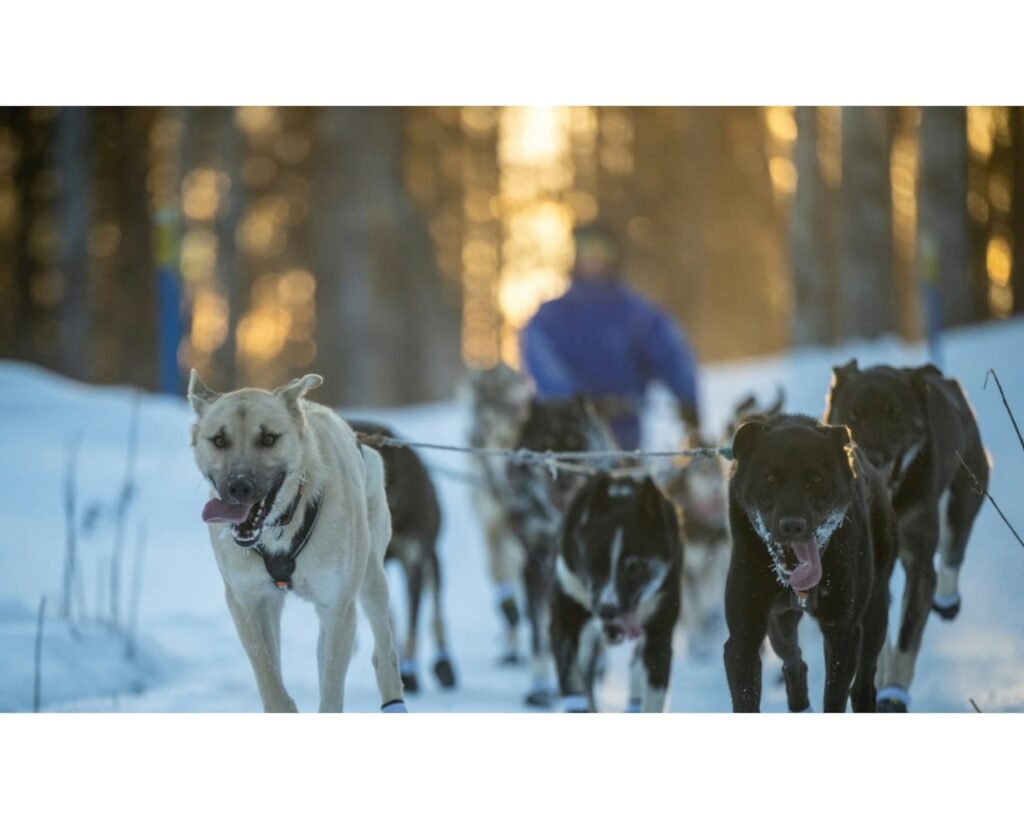The Arctic rewards stubborn grit, quick thinking, and calm under pressure – and punishes everything else. That may sound like the setup for a personality test rather than a forecast, but here’s the twist: the old zodiac archetypes map surprisingly well onto traits scientists already know help humans cope with cold and darkness. Think of the signs as story shorthands for real behavioral patterns like conscientiousness, novelty seeking, or social cohesion. In a world of ice, traits become tools. The question isn’t whether the stars decide our fate; it’s which personalities carry the right mix of physiology, mindset, and teamwork to last through a polar night.
The Hidden Clues

Start with a brutal reality check: cold kills quietly, and it tests judgment before it tests muscle. People who scan for risk early, ration energy, and keep routines tend to avoid the cascade that ends in frostnip, poor decisions, and injury. That sounds like the grounded edge often pinned to certain signs, but the science behind it is familiar – planning reduces cognitive load when fingers go numb and reaction time slows. Non-shivering thermogenesis helps, yet behavior determines whether warm layers stay dry and usable. If you’ve ever felt how fast a wet glove becomes your enemy, you know the difference between careful and careless can be measured in minutes.
There is another clue hidden in the dark: mood and sleep. Under polar night, circadian rhythms drift, and some people tolerate that disruption better than others. The personalities that build rituals – lights at set hours, shared meals, checklists – often stabilize sleep and morale. Teams quietly shield each other from isolation by rotating duties and celebrating small wins. That social thermoregulation, the warmth of coordination, matters more up here than most admit.
Grounded Grit: Earth Signs in the Ice

Capricorn, Taurus, and Virgo get cast as practical, methodical, and patient – the exact temperament that keeps stoves fueled and shelters sealed. In cold research, conscientiousness tracks with safer choices and fewer accidents, and these archetypes mirror that steady lane. They budget calories, dry gear before it freezes, and keep tools organized when storms knock out visibility. Slow and sure looks boring until it is the only thing standing between a stable camp and a dangerous scramble. In harsh weather, boring wins.
Biology tilts in their favor when the plan includes heat economics. Eat on schedule, stay slightly active, and let brown adipose tissue do its quiet, heat-making work. Earth-sign thinkers are also the ones who actually patch micro-tears in tents before wind makes them catastrophic. They read snow like spreadsheets, noticing subtle crusts and drifts that spell risk. Give them a task list and a thermometer, and they’ll give you a safe morning.
Mind Over Frost: Air Signs and Cognitive Adaptation

Aquarius, Gemini, and Libra are storytellers of ideas, and that skill is underrated when daylight shrinks to a blue hour. Problem framing beats panic when gear fails, and quick cognitive flexibility finds workarounds a plodding plan might miss. In lab studies, novelty seeking can be a hazard, but curiosity paired with systems thinking fuels innovation under pressure. Air-sign energy fits the science of cold adaptation when it focuses on checklists, diagnostics, and comms. When radios crackle and batteries sag, the best thinker in the room is priceless.
The trick is to keep minds from outrunning bodies. Cold blunts fine motor control, so designs must be glove-friendly and idiot-proof at minus twenty. Air signs shine when they standardize hacks, label them, and teach the team. They also keep morale up with conversation that distracts from the grind without denying the stakes. In short, they make the mental map that keeps everyone between safety lines.
Heat in Motion: Fire Signs at the Edge

Aries, Leo, and Sagittarius bring drive, and movement is literal heat. Short, controlled bursts of activity raise core temperature and morale, especially when spirits sag in long storms. Physiology backs this: gentle dynamic work reduces reliance on shivering, which wastes energy fast. Fire-sign archetypes also chase horizons, and in a white landscape that spirit can scout routes and spot weather breaks. The art is channeling boldness, not snuffing it out.
Risk calibration is the hard part. Impulses that thrill at home can be lethal when wind chill eats exposed skin in minutes. The best fire-sign strategy uses clear go/no-go rules, buddy checks, and preplanned turn-backs. With structure, their speed and optimism pull teams through bleak stretches that grind down caution alone. They light motion into a plan instead of burning it on a whim.
Deep Water Reserves: Water Signs and Social Warmth

Cancer, Scorpio, and Pisces are painted as intuitive and loyal, and those social traits keep groups intact when light fades for weeks. Emotional regulation correlates with persistence in endurance settings, and water-like patience steadies jittery nights. In winter labs and polar stations, shared rituals, check-ins, and humor buffer stress and protect sleep. Water-sign energy excels at noticing who is slipping before trouble shows on a face or logbook. That quiet attention is a survival skill, not a soft extra.
There’s a physiological echo, too: people who maintain steady routines often eat and hydrate better, which supports thermogenesis and cognition. Water-sign archetypes rally others to drink warm broths, rotate socks, and talk through fear without drama. They also lean into creative distractions – music, stories, sketches – that smooth rough moods without denying reality. In deep cold, those micro-lifts keep motivation from cracking. Their warmth is literal and social at once.
Why It Matters

Astrology is not a scientific sorting hat, but its archetypes can spark a useful conversation about real traits that predict adaptation: planning, flexibility, controlled risk, and social glue. Expedition leaders and isolated crews already screen for these, often using personality inventories rather than birth charts. What’s interesting is how old symbols mirror modern findings about teamwork under stress and the bio-behavioral basics of cold survival. Map the signs onto evidence-based traits, and you get a simple mnemonic for building balanced teams. It’s a translation exercise, not a proof claim.
Compared with traditional selection that leans hard on fitness and technical skills, this lens adds a behavioral mesh that catches problems early. It encourages leaders to pair steady planners with rapid troubleshooters and morale builders, then add rules to temper risk-takers without extinguishing their spark. It also brings everyday readers into the science with a familiar set of characters. In a world facing more extreme weather, accessible frameworks help people remember real protocols. That makes the story useful, not just fun.
- Cold exposes gaps fast: small judgment errors compound into major incidents.
- Behavioral routines conserve heat and attention better than ad hoc reactions.
- Team diversity in temperament reduces single-point failure under stress.
The Future Landscape

The next wave of polar resilience looks less like heroics and more like smart systems. Wearables that read skin temperature and perfusion can cue movement before numbness sets in, nudging non-shivering thermogenesis safely. Textiles are learning new tricks, from aerogel layers to phase-change fibers that buffer temperature swings without bulk. Compact induction cooktops and sealed-fuel systems cut moisture and CO buildup inside shelters. Even small rigs – battery warmers, frostproof connectors, glove-friendly interfaces – translate cognition into safer hands.
Psychology tech is evolving, too. Light protocols that time blue-rich exposure help anchor circadian rhythms during polar night, while group scheduling apps protect shared rest. Training simulations now stress-test both decision trees and team dynamics, revealing where boldness needs rails and where caution needs a nudge. Climate change complicates all of it by making ice thinner, storms sharper, and logistics harder. The winning profile will blend grounded habits, inventive problem solving, calibrated drive, and steady social care – whatever name you give those traits.
Conclusion

Try building your own polar-ready skill set, no horoscope required. Practice routine building in winter – set light schedules, prep layers the night before, and keep a simple gear checklist by the door. Learn cold basics like wind chill, frostbite signs, and safe movement pacing, and share them with a friend. Support Arctic communities and researchers who live the realities of ice and isolation, from search-and-rescue groups to cultural programs preserving cold-tested knowledge. Most of all, treat personality as a toolkit you can sharpen: plan better, adapt faster, take smarter risks, and keep one another warm.

Suhail Ahmed is a passionate digital professional and nature enthusiast with over 8 years of experience in content strategy, SEO, web development, and digital operations. Alongside his freelance journey, Suhail actively contributes to nature and wildlife platforms like Discover Wildlife, where he channels his curiosity for the planet into engaging, educational storytelling.
With a strong background in managing digital ecosystems — from ecommerce stores and WordPress websites to social media and automation — Suhail merges technical precision with creative insight. His content reflects a rare balance: SEO-friendly yet deeply human, data-informed yet emotionally resonant.
Driven by a love for discovery and storytelling, Suhail believes in using digital platforms to amplify causes that matter — especially those protecting Earth’s biodiversity and inspiring sustainable living. Whether he’s managing online projects or crafting wildlife content, his goal remains the same: to inform, inspire, and leave a positive digital footprint.




